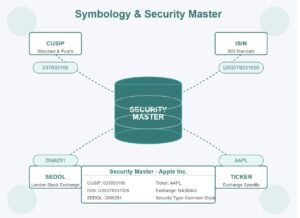Home Education center Long Short Direct Indexing: Introduction
Long Short Direct Indexing: Introduction
Table of Contents:
Unlock tax-efficient alpha by combining passive indexing with targeted long/short direct indexing portfolio overlays.
Direct indexing lets you hold the individual stocks of an index, enabling tax-loss harvesting, custom factor tilts, and full transparency. By adding a controlled short book alongside your long core, you create a 100% net-market exposure fund that can express active views at scale. Here’s how each flavor works—and why we name them 110/10, 120/20, 130/30, and 140/40.
How Long/Short Direct Indexing Works
- Start with 100% Core – You own the typical index basket (e.g., S&P 500) worth 100% of your portfolio value.
- Short “X%” – You sell short X% of the portfolio value in names you expect to underperform. This raises cash equal to X% of NAV.
- Reinvest +X% – You take the cash proceeds and buy an extra X% of your highest-conviction long ideas.
- Result:
- Long exposure: 100% core + X% extra = (100 + X)%
- Short exposure: X%
- Net market exposure: (100 + X) – X = 100%
Because you end up with (100 + X)% long and X% short, it’s called an (100 + X)/(X) strategy—for example, 130/30 when X = 30.
Strategy Deep Dives
– 110/10 Long/Short Direct Indexing – Light-Touch Alpha Boost
- Structure: 110% long / 10% short
- Mechanics:
- Short the 10% worst-performers in your index (by signal)
- Recycle proceeds to boost core names by 10%
- Why “110/10”?
- 100% base + 10% extra long = 110% long
- 10% short = net 100% exposure
- Use Cases & Benefits:
- Small active tilt—ideal for advisors who want a dash of alpha without large tracking error
- Tax-loss harvesting remains robust—shorts can be recycled into fresh positions
- Key Considerations:
- Lower borrowing costs and margin requirements
- Minimal operational overhead
– 120/20 Long/Short Direct Indexing – Balanced Alpha Tilt
- Structure: 120% long / 20% short
- Mechanics:
- Short top 20% names on your “underweight” list
- Add 20% to your strongest factor or theme ideas
- Why “120/20”?
- 100% core + 20% extra long = 120% long
- 20% short = net 100%
- Use Cases & Benefits:
- Medium active risk—comfortably express larger convictions (e.g., ESG screens, momentum)
- Distinctly different return profile vs. plain-vanilla indexing
- Key Considerations:
- Moderate margin and borrow costs
- Requires clear signal or factor framework
– 130/30 Long/Short Direct Indexing – The Institutional Core
- Structure: 130% long / 30% short
- Mechanics:
- Short 30% of the portfolio in names with weakest outlook
- Deploy 30% proceeds into high-conviction ideas (quality, low vol, sector rotation)
- Why “130/30”?
- 100% base + 30% extra long = 130% long
- 30% short = net 100%
- Use Cases & Benefits:
- Classic hedge-fund replacement in a separately managed account (SMA)
- Tactical alpha across themes without giving up tax efficiency
- Key Considerations:
- More robust infrastructure for short borrowing and compliance
- Risk overlays are critical to cap net risk and sector exposures
– 140/40 Long/Short Direct Indexing – High-Octane Alpha Expression
- Structure: 140% long / 40% short
- Mechanics:
- Short the 40% most unattractive securities
- Reinvest in your best 40% ideas
- Why “140/40”?
- 100% core + 40% extra long = 140% long
- 40% short = net 100%
- Use Cases & Benefits:
- Aggressive managers or UHNW clients seeking maximum differentiated return
- Full expression of conviction in both long and short books
- Key Considerations:
- Highest funding and borrow costs
- Demands deep research, risk management, and compliance controls
Implementation Tips
- Signal Framework: Define easy-to-implement quantitative or fundamental screens to rank longs/shorts.
- Risk Budgets: Cap sector, factor, and position limits to control unintended bets.
- Tax Management: Systematic loss harvesting on long and short legs enhances after-tax returns.
- Technology Stack:
- Portfolio Construction: API-driven engines (e.g., Alphathena)
- Execution: Smart-order routing, high-touch or algos for low slippage
- Reporting: Real-time exposure dashboards and compliance flags
Why Direct Indexing + Long/Short?
- Customization: Tailor every exposure to client objectives and constraints.
- Transparency: Full visibility into each long and short position.
- Tax Efficiency: Harvest losses on both sides of the book.
- Net Neutrality: Maintain 100% market exposure while seeking alpha.
Ready to elevate your indexing toolkit? Explore Alphathena’s Long/Short Direct Indexing platform and start designing your own 110/10–140/40 portfolios today.
Related Links
Offer personalized experiences for every client at scale




